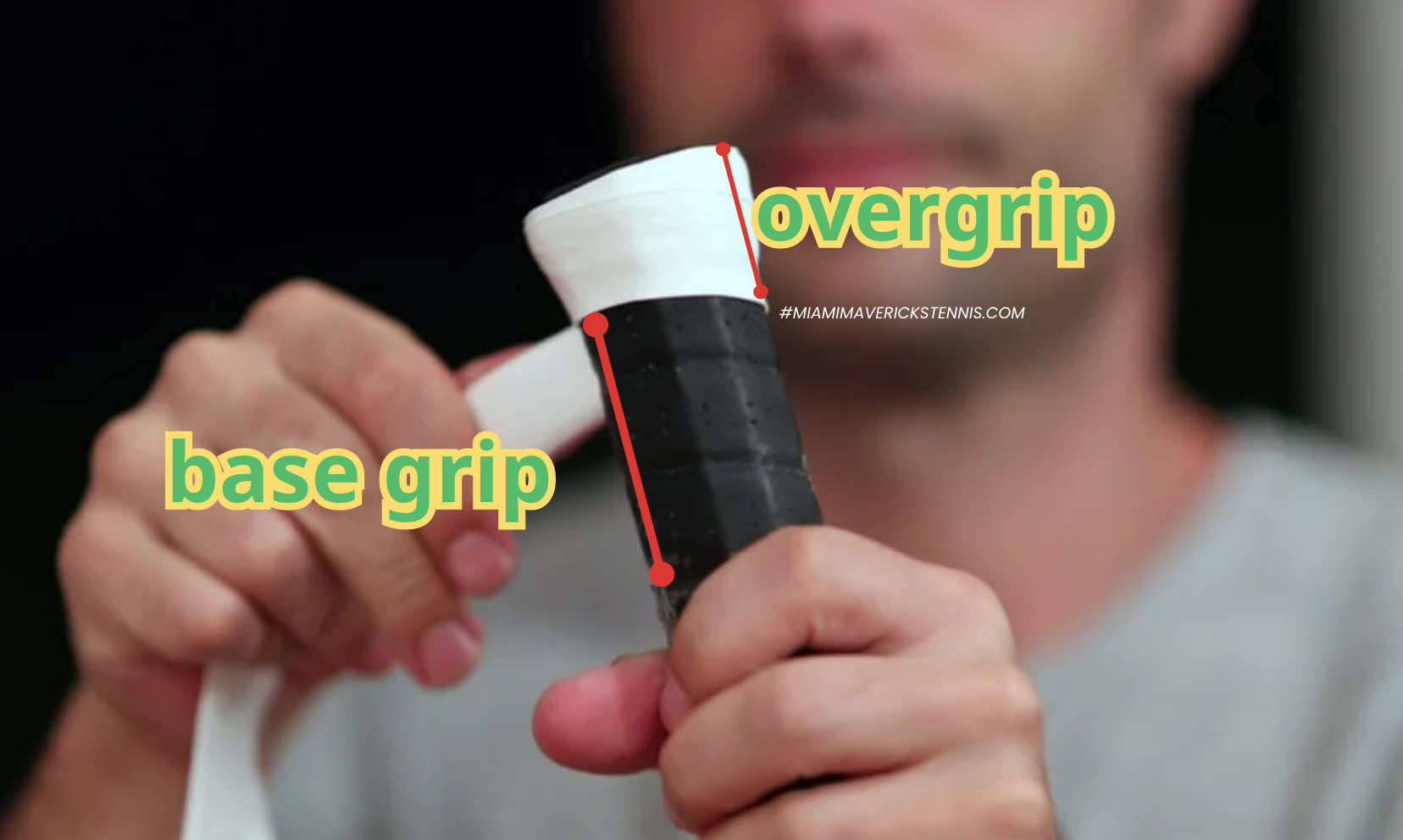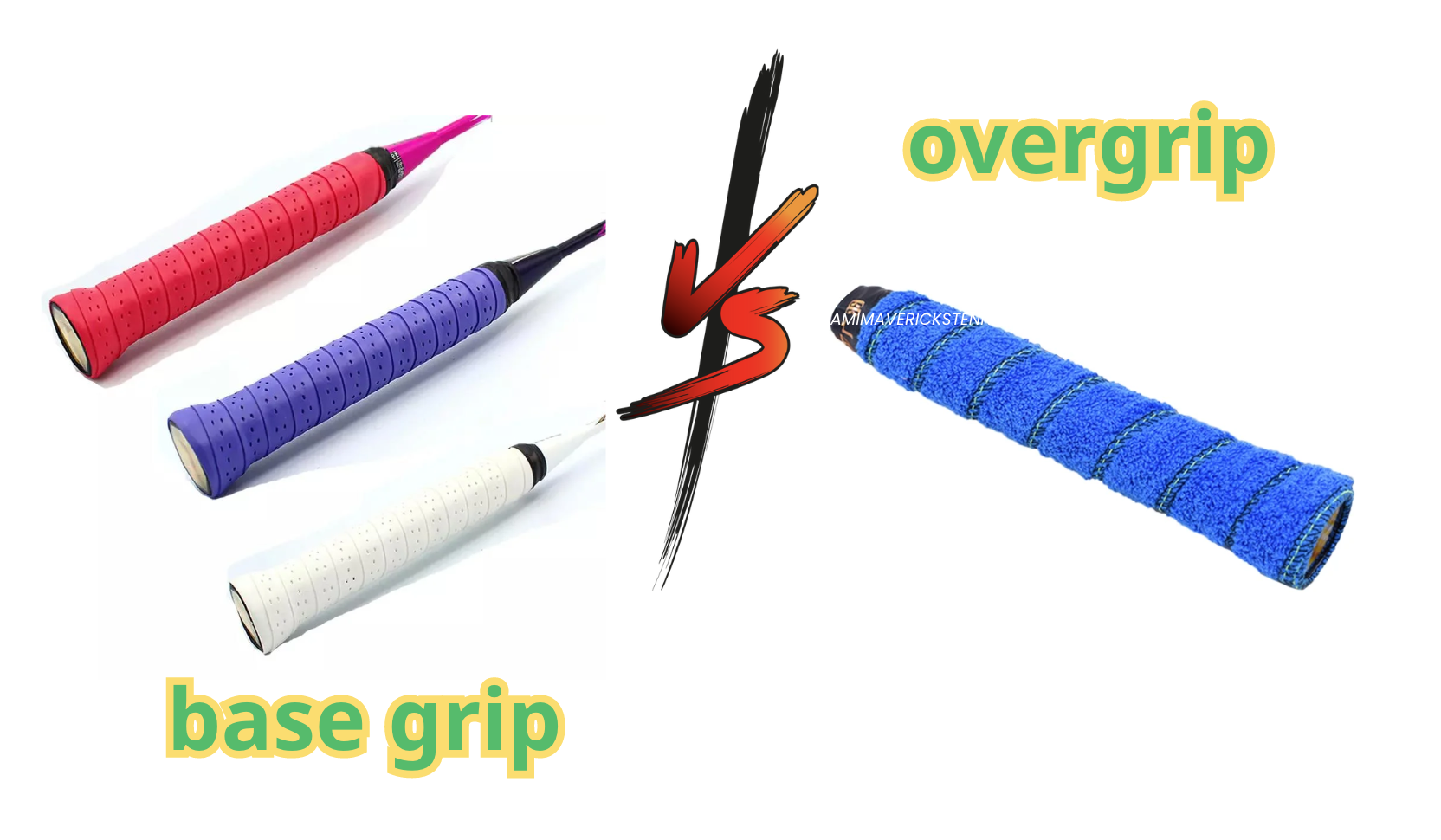When it comes to tennis, the grip on your racket is a critical factor that can significantly impact your performance on the court. While the terms “base grip” and “overgrip” are often used interchangeably, it is essential to understand the key differences between them.
Table Of Contents
Purpose
A base grip, also known as the replacement grip, is the primary grip that comes with your tennis racket. It is designed to provide a solid foundation and directly connects your hand to the racket handle. The base grip plays a crucial role in offering comfort, stability, and control during play.
An overgrip is an additional layer that players can wrap over the base grip. The primary purpose of an overgrip is to enhance the feel and absorb moisture during intense gameplay. Overgrips provide a tackier surface, which can improve grip security and prevent slippage.

grip vs overgrip
Materials
Base grips are typically made of synthetic materials, such as polyurethane or synthetic leather. These materials offer durability and a firm grip for extended periods of play. Base grips often have perforations or a textured surface to enhance sweat absorption and maintain a dry feel.
Overgrips, on the other hand, are usually made of a thin, soft, and more absorbent material, such as microfiber or cotton. Overgrips are designed to be easily installed and replaced when needed. They offer an extra layer of cushioning and improve the tactile connection between the player’s hand and the racket handle.

overgrip vs replacement grip
Durability
Base grips are intended to be long-lasting and can withstand extended use. They are designed to provide consistent performance over time, even with regular wear and tear. Base grips may need replacement after several months or when they become worn out or lose their tackiness.
Overgrips, being thinner and softer, have a shorter lifespan compared to base grips. They are more prone to wear and tear, particularly with heavy perspiration and aggressive gameplay. Players often replace overgrips more frequently, usually after a few matches or whenever they start to feel worn or lose their absorbency.
Replacement
Replacing a base grip requires more effort and time compared to an overgrip. To replace a base grip, you typically need to remove the old grip, clean the handle, and carefully install the new grip. This process may require some expertise or assistance from a professional racket stringer.
Replacing an overgrip, on the other hand, is a relatively simple task that most players can do themselves. You can easily remove the old overgrip and wrap a new one around the handle. Many players carry spare overgrips in their bags to quickly replace them during matches or practice sessions.
Frequently Asked Questions (FAQs)
Should I use a tennis overgrip?
The use of a tennis overgrip is a personal preference. However, overgrips can be beneficial if you want to enhance the feel, absorb moisture, or customize the grip size of your racket handle.
Do the pros use overgrips?
Yes, many professional tennis players use overgrips. They often customize their grips by adding overgrips to achieve the desired level of tackiness and feel on their racket handles.
How often should I replace an overgrip?
The frequency of replacing an overgrip depends on factors such as your playing style, perspiration levels, and the quality of the overgrip. Generally, players replace overgrips every few matches or whenever they notice a decline in grip quality.
Can I use an overgrip as a replacement grip?
An overgrip is not designed to replace a base grip. Its purpose is to enhance the existing grip’s feel and absorbency. For a proper replacement grip, it is recommended to use a designated base grip that matches your racket model.
Can I stack overgrips?
While it is possible to stack multiple overgrips to increase grip size or cushioning, it may alter the balance and feel of the racket. It is advisable to consult with a tennis expert or experiment cautiously if you choose to stack overgrips.
How do you replace a tennis racket overgrip?
To replace a tennis racket overgrip, start by removing the old overgrip carefully. Unroll the new overgrip and begin wrapping it around the handle, ensuring a tight and even application. Secure the end of the overgrip with the provided tape or finishing tape for a secure fit.
Understanding the distinctions between base grips and overgrips is essential for every tennis player. By selecting the right grip option and maintaining it properly, you can enhance your performance and enjoy a comfortable and secure hold on your racket.

